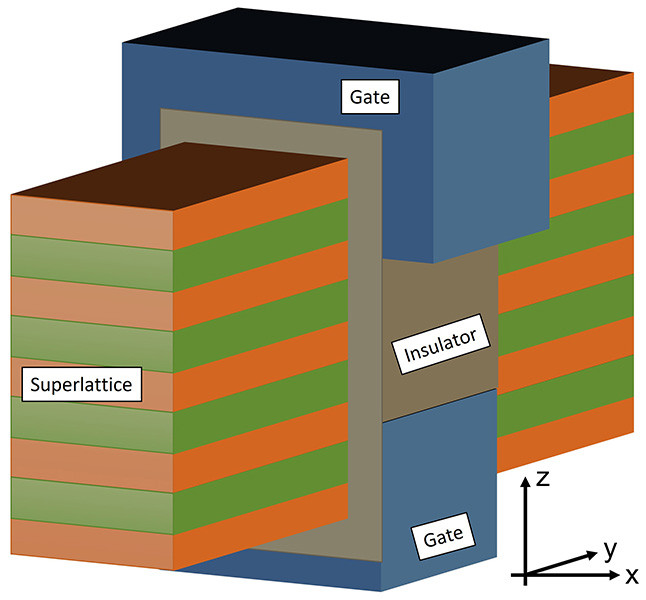CasFET: The Innovative New Transistor Technology That Could Revolutionise Computing
06-10-2021 | By Jack Pollard
Recently, researchers from Purdue University announced the development of a new transistor technology called CasFET that may help further reduce the size of transistors. What challenges do current semiconductor foundries face, what did the researchers develop, and could it help with the next generation of semiconductor devices?
What challenges do semiconductors face?
Since the development of the first integrated circuits, the idea of Moore’s Law has pressured semiconductor manufacturers to double the number of transistors on a semiconductor die every two years. This doubling has massively contributed to the advancement of technology by increasing the processing capabilities of devices, increasing memory sizes, and enabled for high-speed communication.
However, transistors are now beginning to reach the atomic scale, and reducing them further in size presents challenges never before seen by the semiconductor industry. For example, atomic-scale devices exhibit quantum effects such as electron tunnelling, making insulation layers difficult to produce. Another challenge faced by atomic-scale transistors is shot noise which arises from the very small currents used (compared to the random movements of individual electrons).
All of these challenges are seeing researchers turn to creative designs and methods to develop functional devices. One of the newer technologies developed by Intel is the RibbonFET, a transistor whose channel is split into multiple wires that are entirely surrounded by the gate. Other technologies are looking into using different materials such as graphene, a single layer of carbon atoms that can be used to make structures with superior conductive properties.
Researchers develop CasFET
Recently, researchers from Purdue University have developed a new transistor technology called Cascade Field-Effect Transistors, or CasFET for short. The new device is similar in appearance to the RibbonFET, whereby the channel is entirely surrounded by the gate. However, the appearance of the CasFET is where the similarities end, and according to the researchers, the action of the new transistor is very different.
The first major difference is that, unlike standard transistors, which use defined conduction and valance bands, the CasFET uses sub-bands where electrons can exist in. According to the researchers, the transistor behaves more like a quantum cascade laser instead of typical FET devices used in electronics.
The second major difference is that the gate and superlattice (i.e. the channel) are perpendicular, whereas typical transistors have their gate and channel parallel. However, it is not clear whether this structure is beneficial to a design, but it is pointed out by the researchers.
The new transistor technology is also said to operate at a broader range of voltages than those currently available and can be constructed from different materials. Furthermore, CasFET offers higher switching speeds making it ideal for future semiconductor technologies requiring faster transistors.

CasFET technology, developed by Purdue University engineer Tillmann Kubis, involves a superlattice that is perpendicular to the transistor's transport direction, enabling switchable cascade states. This unique design element is what sets CasFET apart from traditional transistor technologies. An image of the technology is provided by Kubis.
Potential Limitations and Challenges of CasFET Technology
While the new CasFET technology developed by researchers at Purdue University shows promise, there are also potential limitations and challenges that need to be considered.
One potential challenge is the complex design and construction of the CasFET, which may make it more difficult and costly to produce than standard transistors. This could limit the scalability of the technology and make it less practical for mass production. The integration of CasFETs into existing semiconductor technologies is also a challenge that needs to be addressed. While the researchers claim that CasFETs could be faster and more efficient than current devices, it remains to be seen how easily they can be integrated into existing systems. This could limit the practical applications of the technology in certain industries or applications.
Another challenge is that the researchers have yet to create a final prototype of the CasFET. While the initial results are promising, it is possible that further research may reveal limitations or challenges that were not initially anticipated. Therefore, the actual performance and viability of the CasFET technology as a practical solution for the semiconductor industry remain to be seen.
Will CasFET help the future of semiconductor technology?
This is a tricky question to answer and entirely depends on the viability of such transistors. While the researchers claim that the new technology could be faster than current devices and operate on a wider range of voltages, the published patent and reports do not mention prototyped devices or experiments. In fact, many reports mention that the researchers will create a finalised prototype once their design exhibits the performance goals they expect. This could mean that the CasFET is more of a concept than an actual device for the time being.
However, if the researchers are right about the CasFET, then the semiconductor industry will have yet another technology to rely on when creating the next generation of semiconductors. Faster transistors allow for faster processors, which in turn enables more data processing. The use of devices operating at different voltage levels also enables CasFET to be used in multiple areas of application, including commercial, industrial, and aerospace.
Overall, we have to wait for the researchers to produce viable devices that deliver the researchers' promises. While individual CasFET transistors may operate well, it could turn out that they cannot be integrated to the same degree as current transistor technology and therefore not ideal for processors and other high-end electronics.

